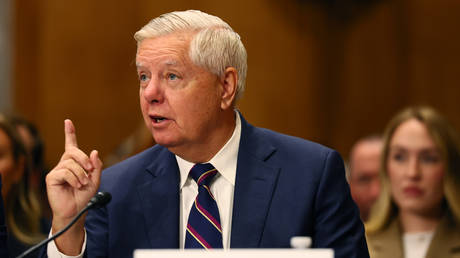Factors Influencing Order Fulfillment Pricing

When considering order fulfillment pricing, several key factors come into play. Your order volume can notably affect costs, as larger quantities often lead to bulk discounts. Furthermore, the size and weight of your products directly influence shipping fees, particularly through dimensional weight pricing. The speed of delivery you choose likewise plays a vital role, with faster options typically being more expensive. Comprehending these elements is fundamental for optimizing your fulfillment strategy, but there’s more to explore.
Key Takeaways

- Order volume affects pricing, with larger orders reducing per-order costs through economies of scale and volume-based discounts.
- Product size and weight significantly influence shipping fees, often measured by dimensional weight, impacting overall fulfillment expenses.
- Shipping speed and distance to the destination directly correlate with costs, as expedited methods and longer distances raise expenses.
- Special handling needs, such as fragile or temperature-sensitive items, increase costs due to additional packaging and compliance requirements.
- Inventory distribution and carrier relationships play a crucial role, as strategic placement and strong partnerships can optimize costs and enhance efficiency.
Order Volume

Order volume plays a vital role in determining fulfillment pricing, as larger orders can effectively distribute fixed overhead costs across multiple shipments, resulting in lower average costs per order.
When you work with a 3PL, comprehending how order volume impacts your order fulfillment costs is fundamental. Many fulfillment companies implement volume-based pricing models, offering discounts as your order volume increases.
For instance, if you typically ship 100 orders a month, scaling that to 500 can markedly decrease your per-order costs. Conversely, low or fluctuating volumes may prevent you from accessing these discounts, leading to higher fulfillment expenses.
Seasonal spikes can additionally complicate costs, emphasizing the need to manage order volume trends strategically for effective budgeting and negotiation with fulfillment providers.
Product Size and Weight

When considering order fulfillment, product size and weight play an essential role in determining your costs.
Shipping fees often rely on dimensional weight, meaning larger packages might cost more, regardless of their actual weight.
Furthermore, optimizing your packaging can greatly influence shipping expenses, so it’s important to choose dimensions and materials wisely to minimize costs.
Dimensional Weight Impact
Comprehending the impact of dimensional weight (DIM weight) on shipping costs is crucial for e-commerce businesses that frequently deal with products varying in size and weight. DIM weight pricing can lead to increased 3PL costs, especially for large, lightweight items. Carriers calculate DIM weight by multiplying the package’s dimensions, which may result in higher charges if your product’s size exceeds its actual weight.
Here’s a table illustrating how DIM weight affects shipping costs:
| Package Size (inches) | Actual Weight (lbs) | DIM Weight (lbs) |
|---|---|---|
| 10 x 10 x 10 | 5 | 7.6 |
| 12 x 12 x 12 | 8 | 10.5 |
| 14 x 14 x 14 | 10 | 14.5 |
| 16 x 16 x 16 | 12 | 18.0 |
| 18 x 18 x 18 | 15 | 24.5 |
Optimize packaging to control these costs effectively.
Packaging Considerations
Packaging considerations play an important role in managing fulfillment costs, particularly as product size and weight considerably influence shipping expenses. Heavier or larger items often lead to increased shipping fees, as charges are based on both actual and dimensional weight.
To mitigate pack and pack fulfillment costs, optimizing packaging dimensions is essential. Oversized packages may incur extra fees, while appropriately sized packaging reduces wasted space and improves cost efficiency. Furthermore, selecting lightweight materials can lower shipping weight, but sturdier options may be necessary for fragile items.
Effective inventory management likewise plays a role, as larger items require more shelf space, impacting 3PL storage rates and overall fulfillment pricing. Balancing protection and cost is critical for efficient packaging decisions.
Shipping Speed and Service Level

When you think about shipping speed, keep in mind that delivery timeframes directly impact your fulfillment costs.
Faster shipping methods, like express delivery, often come with higher transportation expenses, which can strain your budget.
Balancing customer expectations for quick delivery with your overall shipping strategy is essential for maintaining both satisfaction and cost efficiency.
Delivery Timeframes Impact Costs
Delivery timeframes greatly impact costs, as opting for faster shipping options often leads to increased expenses. When you choose expedited delivery, you’re likely to encounter several cost factors:
- Expedited Logistics: Faster shipping requires more efficient routing and resource allocation, driving up fulfillment center costs.
- Labor Resources: Additional labor may be necessary to meet tight deadlines, contributing to higher operational expenses.
- Service Level Agreements (SLAs): Premium charges from carriers often reflect the operational demands of meeting faster delivery timelines.
- Logistics Complexity: Shorter delivery timeframes increase the complexity of logistics processes, further inflating costs.
Balancing shipping speed with budget constraints is essential, especially when evaluating 3PL fulfillment pricing to guarantee sustainable operations during enhancing customer satisfaction.
Shipping Methods and Pricing
Choosing the right shipping method can greatly influence your fulfillment costs, especially as different options cater to varying delivery speed requirements and service levels.
Shipping methods and pricing are essential in managing fulfillment pricing effectively. Expedited shipping, like overnight or two-day delivery, typically incurs higher costs because of the logistics involved. Conversely, ground shipping is more economical, making it suitable for less time-sensitive orders.
Furthermore, service level agreements often outline expected delivery times, with quicker services carrying increased fees. Carriers may likewise impose surcharges for expedited services, such as fuel and handling fees.
Evaluating your shipping needs and considering volume discounts can help mitigate costs while meeting customer expectations efficiently.
Service Levels and Expectations
Service levels directly influence fulfillment costs and customer satisfaction, as they dictate how quickly orders are processed and delivered.
To meet rising customer expectations for speed, businesses often face increased 3PL fees. Here are some key factors to reflect on:
- Shipping Speed: Faster delivery options can raise costs by 30-50% compared to standard rates.
- Service Level Agreements (SLAs): SLAs define expected delivery times and can add charges for guaranteed speed.
- Operational Efficiency: Investing in advanced logistics solutions may incur higher fulfillment services pricing.
- Cost-Benefit Balance: Finding a balance between speed and budget is essential to avoid lost sales because of slow deliveries.
Understanding these elements helps optimize fulfillment strategies and maintain customer loyalty as well as managing expenses effectively.
Distance to Final Destination

The distance to the final destination plays an essential role in determining shipping costs for any ecommerce business. Longer distances typically lead to higher freight rates as a result of increased fuel consumption and vehicle depreciation. Each additional mile can considerably raise your overall shipping expenses, which includes labor and handling operations.
When shipping across multiple logistics zones, costs can escalate further, as goods may incur varying regional surcharges and taxes. To optimize shipping efficiency, consider strategically placing inventory closer to major markets.
This approach can help reduce fulfillment center pricing and lower 3PL warehouse pricing, ultimately minimizing transportation costs and improving delivery times, enhancing customer satisfaction, and positively impacting your bottom line.
Seasonal Demand Fluctuations

As demand fluctuates seasonally, fulfillment costs can rise considerably, especially during peak periods like holidays or sales events.
To manage these fluctuations effectively, consider the following strategies:
- Analyze Historical Sales Data: Use past trends to predict demand and optimize inventory levels.
- Employ Flexible Pricing Models: Opt for pay-as-you-go structures to align costs with actual usage, reducing unnecessary fees.
- Utilize Multiple Fulfillment Centers: Distributing inventory closer to key markets can minimize shipping costs and improve delivery times.
- Plan for Labor Needs: Anticipate increased labor demands and associated 3pl pick and pack costs by scaling workforce efficiently during peaks.
Packaging Requirements

Effective packaging requirements play a vital role in managing fulfillment costs, particularly as they relate to shipping expenses influenced by dimensional weight pricing. Choosing the right packaging can greatly impact your pick and pack fulfillment cost.
For instance, using appropriately sized boxes can minimize wasted space, reducing shipping fees. Custom packaging solutions might improve your brand’s image but can additionally incur extra charges per package, affecting your overall expenses.
Furthermore, opting for sustainable packaging resonates with eco-conscious consumers, potentially boosting brand loyalty. Nevertheless, it may come at a premium.
In the end, balancing cost-effective materials with efficient packaging strategies is fundamental for controlling your fulfillment budget while ensuring customer satisfaction and minimizing damage during transit.
Special Handling Needs

Managing fulfillment costs effectively can be particularly challenging when dealing with special handling needs. These requirements can lead to increased 3PL warehouse charges and higher fulfillment expenses because of several factors:
- Fragile items require additional protective packaging and careful handling, raising costs.
- Temperature-sensitive products, like perishables, incur higher storage and shipping fees because of specialized facilities.
- Hazardous materials demand compliance with regulations, which increases labor costs and processing times.
- Custom packaging for unique shapes can raise material costs and require more labor during the packing process.
Understanding these elements is vital for budgeting and managing overall fulfillment expenses, as they can greatly impact your bottom line.
Returns Processing

Returns processing is a vital aspect of fulfillment that can greatly affect your overall costs, especially if your business experiences high return rates. Returns processing fees can notably increase your fulfillment expenses, particularly when managing reconditioning and restocking items. Clear return policies streamline this process, helping you minimize costs.
| Cost Component | Description |
|---|---|
| Returns Processing Fees | Charged per order, varying by provider |
| Labor and Handling | Additional costs for reconditioning |
| Inventory Holding | Increased costs owing to returned items |
| Spoilage Risk | Particularly for perishable goods |
| Average Return Rate | 15% to 30% in e-commerce |
Effective inventory management strategies are crucial in mitigating the impact of returns on your bottom line.
Carrier Relationships and Negotiations

Building strong relationships with carriers is crucial for optimizing your fulfillment operations, as long-term partnerships can lead to significant savings on shipping rates.
To effectively negotiate and manage these relationships, consider the following strategies:
- Evaluate Multiple Carriers: Compare 3PL rates and services to find the best fit for your needs.
- Leverage Volume Discounts: Use your shipping volume to negotiate lower prices based on weight or number of shipments.
- Tailor Your Proposals: Understand your products’ specific needs, such as size and handling, to secure the best pricing solutions.
- Review Contracts Regularly: Regularly reassess and renegotiate contracts to adapt to changing market conditions, ensuring you maintain competitive pricing for your cost of fulfillment services.
Conclusion

In conclusion, grasping the factors that influence order fulfillment pricing is essential for effective cost management. By considering elements like order volume, product size, and shipping speed, you can make informed decisions that optimize your fulfillment strategy. Furthermore, maintaining strong carrier relationships and addressing special handling needs can lead to significant savings. Ultimately, a strategic approach to these factors will improve your overall efficiency and profitability in the competitive domain of order fulfillment.
Image Via Envato
This article, "Factors Influencing Order Fulfillment Pricing" was first published on Small Business Trends
What's Your Reaction?
 Like
0
Like
0
 Dislike
0
Dislike
0
 Love
0
Love
0
 Funny
0
Funny
0
 Angry
0
Angry
0
 Sad
0
Sad
0
 Wow
0
Wow
0




























































































